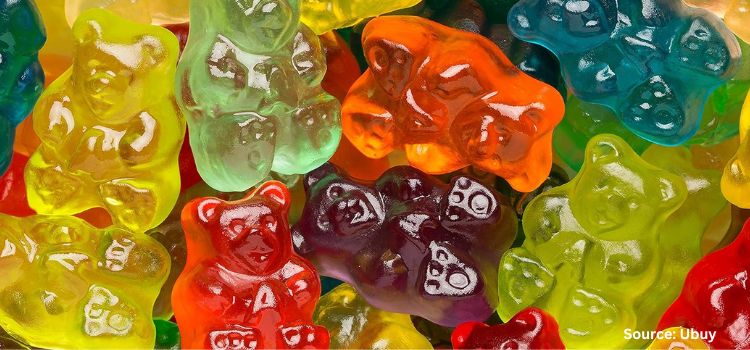
Nutraceutical Excipients Market by Type (Artificial, and Natural/Organic), by Product (Prebiotics, Probiotics, Proteins and Amino Acids), by Functionality (Binder (MCC, HPMC, and HPC), Disintegrants (Cross povidone, and Croscarmellose), Fillers and Diluents, Coating Agent, Flavouring Agent, Lubricants, and Others), by Form (Dry, and Liquid), and by End Use (Dietary Supplements, Functional Foods, Pharmaceuticals, and Others) –Global Opportunity Analysis and Industry Forecast 2025-2030
US Tariff Impact on Nutraceutical Excipients Market
Trump Tariffs Are Reshaping Global Business
Nutraceutical Excipients Market Overview
The Global Nutraceutical Excipients Market size was valued at USD 4.76 billion in 2024 and is predicted to reach USD 7.24 billion by 2030 with a CAGR of 7.2% from 2025-2030.
The nutraceutical excipients market is witnessing strong growth driven by rising consumer demand for natural and clean-label ingredients, increased focus on formulation innovation and advanced delivery systems, and heightened awareness of preventive healthcare. However, high costs and limited availability of novel and specialized excipients pose a restraint to widespread market adoption. Nevertheless, the development of customized and high-performance excipients tailored to specific nutraceutical formulations presents significant future opportunities for market expansion.
Growing Demand for Natural and Clean-Label Excipients Fuels the Nutraceutical Excipients Market Growth
One of the most prominent forces propelling the nutraceutical excipients industry growth is the escalating consumer preference for natural and clean-label ingredients. Individuals are increasingly scrutinizing product labels and seeking formulations with minimal synthetic additives. This market trend is compelling excipient manufacturers to innovate and offer a wider range of plant-based, naturally derived, and recognizable excipients. For instance, Roquette offers nutraceutical ingredients derived from plant-based sources, and there's a growing interest in excipients that align with dietary preferences and restrictions, such as vegan or non-GMO options. Colorcon has also launched label-friendly excipients for nutritional products. This demand creates a significant growth potential for excipients that consumers perceive as healthier and more trustworthy.
Advanced Delivery Systems and Formulation Innovation Boosts the Market Expansion
The increasing focus on formulation innovation is a significant driver in the nutraceutical excipients industry. Manufacturers are continuously exploring novel dosage forms and delivery systems to improve the efficacy, bioavailability, and palatability of nutraceutical products. This includes the development of excipients suitable for chewable tablets, orally disintegrating films, effervescent formulations, and particularly popular options like plant-based gummies. The ability of excipients to enhance the stability of active ingredients, control their release, and improve the overall user experience is crucial. Lubrizol, for example, has launched Carbopol polymers for nutraceuticals with EU food-grade approval, highlighting the ongoing advancements in excipient technology. This drive for better formulations directly impacts the demand for specialized and high-performing excipients, contributing to the overall market size expansion.
Rising Preventive Healthcare Awareness Accelerates the Demand for Nutraceutical Excipients
The increasing public awareness and focus on preventive healthcare are significant drivers for the nutraceutical excipients industry. Consumers are becoming more proactive in managing their health and are increasingly turning to nutraceuticals to supplement their diets and support overall well-being. This heightened awareness translates into greater demand for a wide array of nutraceutical products, which in turn fuels the need for excipients to formulate these products effectively and appealingly. As individuals take a more active role in their health, the market size for nutraceuticals expands, creating a parallel demand for the excipients that underpin their production. This trend underscores the strong connection between consumer health consciousness and the growth potential of the nutraceutical excipients industry.
High Costs and Limited Availability of Novel Excipients Constrains the Market Growth
A key challenge in the nutraceutical excipients industry lies in the cost and availability of certain novel excipients. As the demand for innovative and specialized excipients grows, particularly those with natural or clean-label attributes, their production processes and sourcing sometimes be more complex and expensive compared to traditional excipients. This impact the overall cost of the final nutraceutical product, potentially affecting consumer affordability and market penetration. Furthermore, the supply chains for some newer excipients might not be as well-established, leading to potential issues with availability and price volatility. This necessitates a careful balance between the desire for cutting-edge excipients and the practical considerations of cost-effectiveness and reliable supply.
Development of Customized Excipients Creates Future Market Opportunities
A significant opportunity for players in the nutraceutical excipients industry lies in the development of novel and customized excipient solutions tailored to specific nutraceutical ingredients and desired product characteristics. As nutraceutical formulations become increasingly complex, involving combinations of various active ingredients with unique properties, the need for excipients that address specific formulation challenges arises. This includes excipients designed to improve the stability of sensitive compounds, enhance the solubility of poorly soluble ingredients, mask unpleasant tastes or odors, and control the release profiles. Companies that offer innovative and tailored excipient solutions that address these specific needs will have a significant competitive advantage and capitalize on the growing demand for sophisticated nutraceutical products. This presents a substantial growth potential within the market. For instance, in May 2023, Roquette launched PEARLITOL ProTec, a plant-based, co-processed mannitol and maize starch excipient designed to protect moisture-sensitive nutraceutical ingredients like probiotics, enhancing stability and enabling consumer-friendly formats like orally disintegrating tablets.
Market Segmentation and Scope of the Study
The nutraceutical excipients market report is segmented based on type, product, functionality, form, end use, and region. By type, the market is categorized into artificial and natural/organic. By product, it includes prebiotics, probiotics, and proteins & amino acids. By functionality, the market is segmented into binders which is further segmented into MCC, HPMC, and HPC, disintegrants which includes Cross povidone and Croscarmellose, fillers & diluents, coating agents, flavouring agents, lubricants, and others. Based on form, the market is divided into dry and liquid. By end use, the market is segmented into dietary supplements, functional foods, pharmaceuticals, and others. Regional breakdown and analysis of each of the aforesaid segments include regions comprising North America, Europe, Asia-Pacific, and RoW.
Geographical Analysis
North America and Europe represent significant markets for nutraceuticals and consequently, for nutraceutical excipients. These regions are characterized by high consumer awareness regarding preventive healthcare, stringent regulatory frameworks, and a mature nutraceutical industry, leading to a demand for advanced and clean-label excipients. The emphasis on formulation innovation and the increasing demand for diverse dosage forms like gummies and controlled-release products are prominent in these regions.
The Asia-Pacific region is anticipated to exhibit substantial growth potential in the nutraceutical excipients market. Factors such as a large and growing population, increasing disposable incomes, and a rising awareness of health and wellness are fueling the expansion of the nutraceuticals market size in this region. This growth is expected to drive a significant demand for various excipients to support local manufacturing and cater to regional preferences.
The Rest of the World region encompasses markets in Latin America, the Middle East, and Africa. While the current market size in these regions might be smaller compared to the others, they present emerging growth opportunities as awareness of nutraceuticals increases and healthcare infrastructure develops. The specific market trends and demand for excipients in these areas will likely be influenced by local dietary habits and economic conditions.
Strategic Innovations Adopted by the Key Players
Key players in the global nutraceutical excipients industry are strategically focusing on innovation and portfolio expansion to capitalize on the sector's growth potential. A significant trend involves the development and launch of clean-label and natural excipients to meet increasing consumer demand for such formulations. For example, Roquette has launched new excipient grades catering to this trend. Another key strategy is the development of multifunctional excipients, which streamline formulations and offer cost efficiencies. Colorcon has introduced label-friendly excipients for nutritional products, demonstrating this approach. Furthermore, companies are actively involved in creating excipients that support innovative dosage forms, such as tasty plant-based nutraceutical gummies offered by Crius Lifesciences. Lubrizol's launch of Carbopol polymers with EU food-grade approval for nutraceuticals illustrates a company proactively addressing regulatory requirements while offering innovative solutions.
KEY BENEFITS
-
The report provides quantitative analysis and estimations of the nutraceutical excipients industry from 2025 to 2030, which assists in identifying the prevailing market opportunities.
-
The study comprises a deep dive analysis of the nutraceutical excipients market including the current and future trends to depict prevalent investment pockets in the market.
-
Information related to key drivers, restraints, and opportunities and their impact on the nutraceutical excipients market is provided in the report.
-
Competitive analysis of the players, along with their market share is provided in the report.
-
SWOT analysis and Porters Five Forces model is elaborated in the study.
-
Value chain analysis in the market study provides a clear picture of roles of stakeholders.
Nutraceutical Excipients Market Key Segments
By Type
-
Artificial
-
Natural/Organic
By Product
-
Prebiotics
-
Probiotics
-
Proteins & Amino Acids
By Functionality
-
Binders
-
MCC
-
HPMC
-
HPC
-
-
Disintegrants
-
Cross povidone
-
Croscarmellose
-
-
Fillers & Diluents
-
Coating Agent
-
Flavouring Agent
-
Lubricants
-
Others
By Form
-
Dry
-
Liquid
By End Use
-
Dietary Supplements
-
Functional Foods
-
Pharmaceuticals
-
Others
By Region
-
North America
-
The U.S.
-
Canada
-
Mexico
-
-
Europe
-
The UK
-
Germany
-
France
-
Italy
-
Spain
-
Denmark
-
Netherlands
-
Finland
-
Sweden
-
Norway
-
Russia
-
Rest of Europe
-
-
Asia Pacific
-
China
-
Japan
-
India
-
South Korea
-
Australia
-
Indonesia
-
Singapore
-
Taiwan
-
Thailand
-
Rest of Asia Pacific
-
-
RoW
-
Latin America
-
Middle East
-
Africa
-
Key Players
-
DuPont de Nemours, Inc.
-
BASF SE
-
Cargill Inc
-
Shin-Etsu Chemical Co., Ltd.
-
Associated British Foods plc
-
Roquette Frères
-
MEGGLE Group Wasser
-
Kerry Group plc
-
Fuji Chemical Industries Co., Ltd.
-
Pharmatrans Sanaq AG
-
Pioma Chemicals
-
Gattefossé
-
Ingredion Incorporated
-
Sensient Technologies Corporation
-
W.R. Grace & Co.
REPORT SCOPE AND SEGMENTATION
|
Parameters |
Details |
|
Market Size in 2024 |
USD 4.76 billion |
|
Revenue Forecast in 2030 |
USD 7.24 billion |
|
Growth Rate |
CAGR of 7.2% from 2025 to 2030 |
|
Analysis Period |
2024–2030 |
|
Base Year Considered |
2024 |
|
Forecast Period |
2025–2030 |
|
Market Size Estimation |
Billion (USD) |
|
Growth Factors |
|
|
Countries Covered |
28 |
|
Companies Profiled |
15 |
|
Market Share |
Available for 10 companies |
|
Customization Scope |
Free customization (equivalent up to 80 working hours of analysts) after purchase. Addition or alteration to country, regional, and segment scope. |
|
Pricing and Purchase Options |
Avail customized purchase options to meet your exact research needs. |














 Speak to Our Analyst
Speak to Our Analyst




















